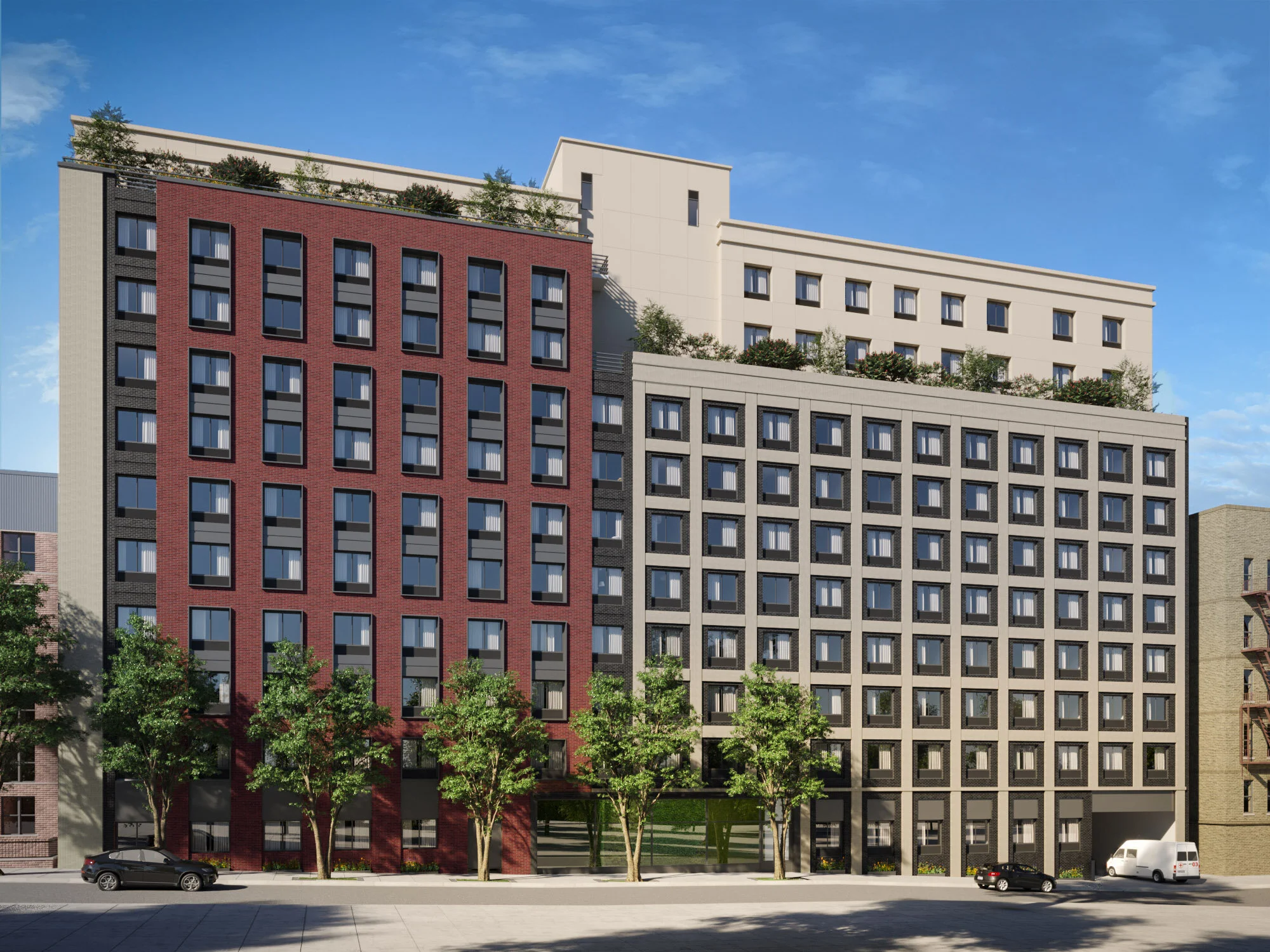NYC mayoral candidates pledge thousands of new supportive housing units to tackle homelessness
/A supportive housing complex in the Bronx. Photo by New York State Homes and Community Renewal
By David Brand
Kathryn Garcia wants to build 10,000 new supportive housing apartments across New York City. Scott Stringer is even more ambitious, proposing 30,000. And Andrew Yang says he will purchase hotels as part of a plan to add 25,000 “deeply affordable units, inclusive of supportive housing units.”
As New York City continues to contend with an historic homelessness crisis and a potential wave of new evictions, supportive housing has only just begun to emerge as an important issue in the race for mayor.
Laura Mascuch, the head of the Supportive Housing Network of New York, said it’s about time leaders prioritize a proven model of permanent housing for the city’s most vulnerable residents. The Network convened six candidates for an April 8 forum about their plans to increase the citywide supportive housing stock.
“We wanted to shine a light on supportive housing really being a crucial and really successful intervention for people leaving homelessness and gaining independence,” Mascuch said.
Supportive housing units are permanent, affordable apartments with on-site services for individuals and families who have experienced homelessness, particularly people with mental health diagnoses, substance use issues or other needs. Tenants sign annual leases and make monthly rent payments, often subsidized by Section 8 or other programs.
A day before the forum, Mascuch wrote an op-ed for City Limits describing how supportive housing had been “notably absent” from discussions around affordable housing and homelessness.
The event allowed candidates to concentrate on an effective housing strategy often lost in the mix of issues.
“What was positive about the forum was everyone got it. They got the importance of supportive housing,” Mascusch said.
Her organization has worked to educate leaders and residents about the community benefits of supportive housing, and the difference between temporary shelter and permanent homes.
“There can be confusion with shelter being transitional and supportive housing being permanent for individuals, families and youth,” she said. “When people hear the word homeless, they equate it with the word shelter.”
Six candidates at the forum — Eric Adams, Shaun Donovan, Garcia, Stringer, Yang and Joycelyn Taylor, who was later blocked from appearing on the mayoral ballot — committed to overriding individual community opposition to supportive housing development.
“Yes, there will be those NIMBYs, but we need to be clear that a housing issue is a citywide issue and I’m not going to back down based on those who don’t believe everyone has a right to housing,” Adams said.
Donovan touted his experience as secretary of Housing and Urban Development to discuss how he would work with the federal and state government to build 2,000 units of supportive housing per year. There are now more than 32,000 supportive housing units citywide, and advocates have called on the city and state to accelerate two plans to build 35,000 more.
Donovan said he would seek to take over privately-owned hotels and unused buildings and convert them into supportive housing. Many existing supportive housing sites are located in former single-room occupancy hotels around the city.
“We have the opportunity to take vacant hotels, vacant buildings around the city and turn them into supportive housing to quickly transform a system that provides a right to shelter into a system that provides right to housing,” Donovan said.
Yang also said he would focus on converting “underutilized hotels,” a proposal that has gained steam after COVID-19 eroded hotel business.
“There’s been a bottle neck of supportive housing development because the city and the state can’t get on the same page,” he said, referencing a state and city agreement to build 15,000 units in New York City. “Converting a hotel, if you relax some of the regulations about what constitutes an apartment or dwelling, can provide housing units at half the cost and half the time.”
Stringer, with the most ambitious goal of 30,000 units, has a long history of housing advocacy. During an appearance on WBAI’s City Watch last month, he described how, as a young housing organizer, he guarded SROs to watch out for “goons” coming into the buildings to evict tenants. The cheap hotels were affordable backstops for adults on the brink of becoming homelessness, but new SRO development was outlawed in 1955. Most sites have been converted for other uses or knocked down.
“A lot of these SROs ended up becoming converted luxury developments, but maybe it’s time to think differently about this because that’s what fuels homelessness,” he told WBAI.
At the forum April 8, he knocked what he called Mayor Bill de Blasio’s emphasis on housing for upper middle class and wealthy New Yorkers instead of truly affordable and supportive units.
“We recognize we have a crisis where 500,000 people are one step away from homelessness and that was pre-pandemic,” he said. “Instead of focusing on bringing people into permanent supportive housing, the city government has focused on building more shelter and building more housing for people who make over $150,000.”
Garcia, too, said supportive housing has been given short shrift by the current administration, where she served as Sanitation commissioner.
“We have known for decades that supportive housing works,” she said. “It’s one intervention that brings people off the street, stabilizes their lives and we have not made the investment here we need to make.”




